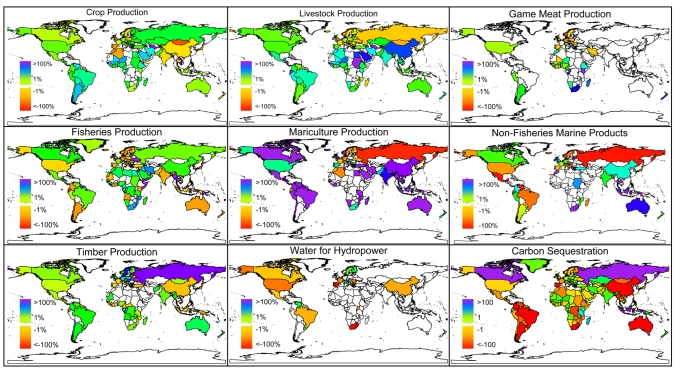In 2005, the Millennium Ecosystem Assessment (MA) demonstrated that 24 of Earth’s critical life-support systems are in decline. This one-time assessment, however, gave no indication of how ecosystem services were changing on shorter time-scales and what has happened since. Governments are calling for better ecosystem-service and biodiversity data to inform national accounts and guide conservation policy. Yet despite growing awareness of human dependence on nature, we still have no centralized monitoring system for detecting and reporting on global ecosystem service change. The Global Earth Observation Biodiversity Observation Network (GEO BON) has taken the lead on establishing such a monitoring system for biodiversity and ecosystem services.
We are working with GEO BON to set up their biodiversity and ecosystem service monitoring system. Our efforts include: defining what essential variables should be monitored (Pereira et al. 2013 Science), outlining potential monitoring strategies (Tallis et al. 2013 BioScience), and determining what could be monitored now versus where major data gaps remain (Karp et al. 2015 Global Environmental Change). We also developed a set of Essential Ecosystem Service Variables (EESVs) that could be monitored to track change in ecosystem service over time (Balvanera et al. 2022 COSUST).

Fig. 1: Global distribution of the percent change in ecosystem-service delivery from 1996-2005. Ecosystem service delivery increased in countries filled with light green to purple colors and declined in countries filled with yellow to red colors. Figure adapted from Karp et al. (2015) Global Environmental Change.
We are also collaborating with Conservation International to help operationalize Wildlife Insights. Scientists and conservation practitioners often use camera traps to monitor wildlife worldwide; however, no platform currently exists to share and analyze the vast numbers of wildlife photos collected globally each year. Wildlife Insights was developed to fill this need, harnessing the power of the data revolution to integrate cutting-edge technology and science to develop a global monitoring system for wildlife. We are working with the Wildlife Insights team to both develop new analytical capabilities for the platform as well as analyze existing camera trap data to explore impacts of global change on terrestrial vertebrates.